BLACK COUNTRY MUSEUM ADVENTURES
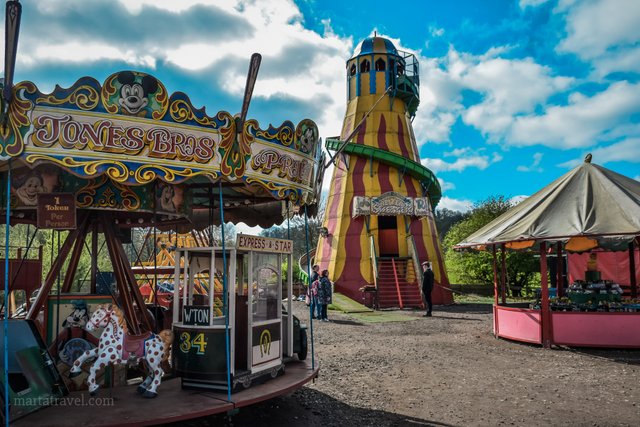
Hello Steemit,
After a little bit of a break, I am back with another travel blog post!
Today I share with you a very exciting journey to the Black Country Museum in West Midlands, UK. If you are close to the city, mark this on your ‘’to-see’’ list as it’s definitely worth a trip!
Located about 40 minutes away from the Birmingham City Centre, in Dudley- you can easily access this place by car or bus and the tickets are £19.50 per adult- it’s quite a hefty price, BUT – once you purchase the daytime tickets, you can come back to the museum at any time for 12 months! (And trust me, you will want to).
I chose not to research too much about this place, to allow for a more raw experience since I wouldn’t fully know what to expect and the anticipation of it, made the trip more exciting. At first, I entered the building and went through different rooms with various machinery and tools displayed, just like in any standard museum.
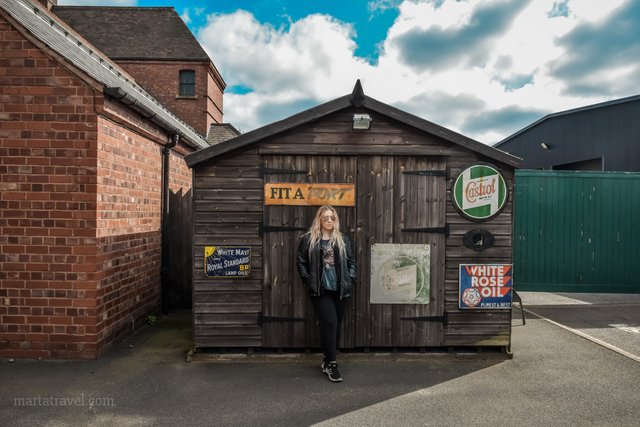
Then, I stepped outside and that’s when the real fun began. First stop- was a vintage car garage filled with old cars from different decades. A strong smell of petrol hit my nostrils and I was momentarily transformed back to my childhood, hanging around my grandad’s garage, handing him tools as he fixed his 1979 Mercedes Benz.
I read all the descriptions of the cars. It was very interesting as apart from elaborating on the year of construction and purpose of them, they also informed me on how they found their way into this museum. Some were donated, some were bought, and others were found in odd places- such as the Birmingham canals! The city is laced with them and I often wondered what items one could find there.

I then went outside and walked down the sidewalk, to a vintage- looking bus stop. I stood there, waiting, until a vintage bus arrived! I was stunned, I just barely entered the museum and already felt as if I was transformed into a classic old movie! The bus took me to a small village… Yes! A village!
Because black country museum is a LIVING museum. It’s a village filled with functioning stores, churches, houses and all of it was as if frozen in time! All the buildings, items, decorations, people – everything was set back in time to represent different decades starting from 1866 all the way to post war.
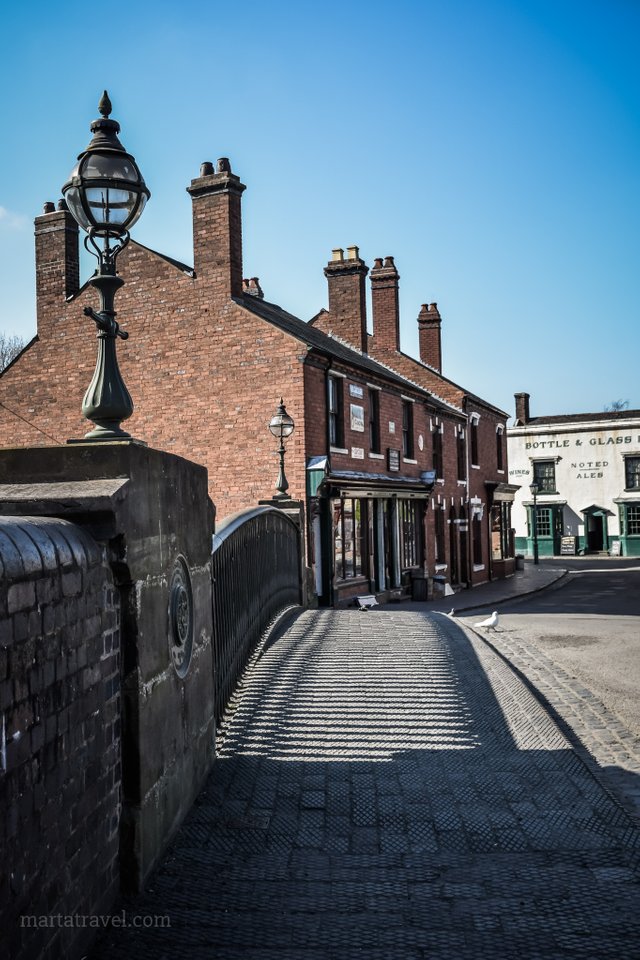
A little information about Black Country –
It gained its name in the mid nineteenth century due to the smoke from thousands of iron working foundries and the coal mines. It was described as ‘’black by day and red by night’’ due to all the smoke and pollution. One of the earliest descriptions of this place was from an 1851 guidebook -Rides on Railway by Samuel Sidney.
‘’The pleasant green of pastures is almost unknown, the streams, in which no fishes swim, are black and unwholesome; the natural dead flat is often broken by high hills of cinders and spoil from the mines; the few trees are stunted and blasted; no birds are to be seen, except a few smoky sparrows; and for miles on miles a black waste spreads around, where furnaces continually smoke, steam engines thud and hiss, and long chains clank, while blind gin horses walk their doleful round. From time to time you pass a cluster of deserted roofless cottages of dingiest brick, half swallowed up in sinking pits or inclining to every point of the compass, while the timbers point up like the ribs of a half-decayed corpse.’’
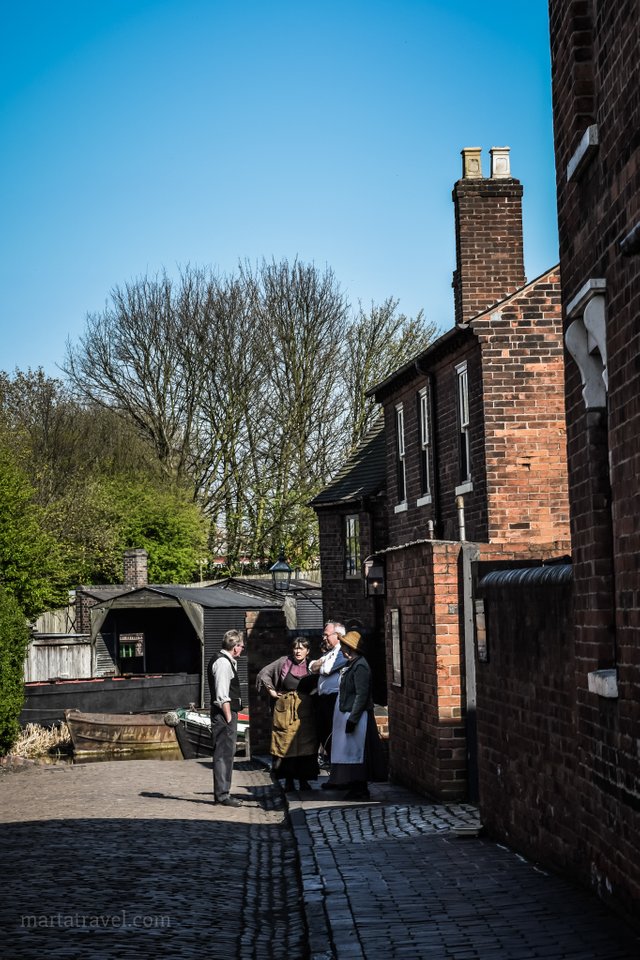
Sidney is describing a barren and desolate place, void of wildlife or nature. He is not subtle with his description. But this was to be expected from a place that was one of the main industrialised and manufacturing parts of the entire United Kingdom (that even produced the anchor for the Titanic). The real price was paid by the smoke, soot, grime and lack of nature and life- in this region. The average age of death for residents would be just 16 years old while they worked in horrid conditions.
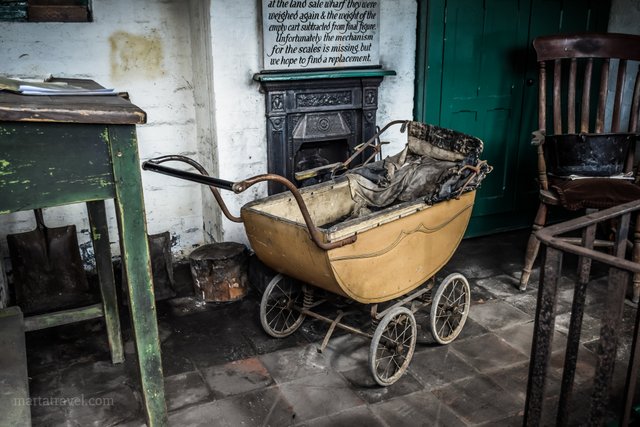
Eventually the factories, coal mines, canals and even railways started closing, drastically changing the appearance of this place. Many residents became unemployed as the area suffered a big economic blow. Within years, the plans have been put in place to re-develop this area, including building the Black Country Living Museum. The living museum was vastly/widely supported by the local community who would often donate the collectibles from different eras. It attracted interest in the area growing to hundreds of thousands visitors per year and once again -boosting popularity and economic growth to the area. This museum is also used as a filming location for the British T.V show – Peaky Blinders! The place is now vibrant and full of life in comparison to smoky, black and lifeless area it was in the past.
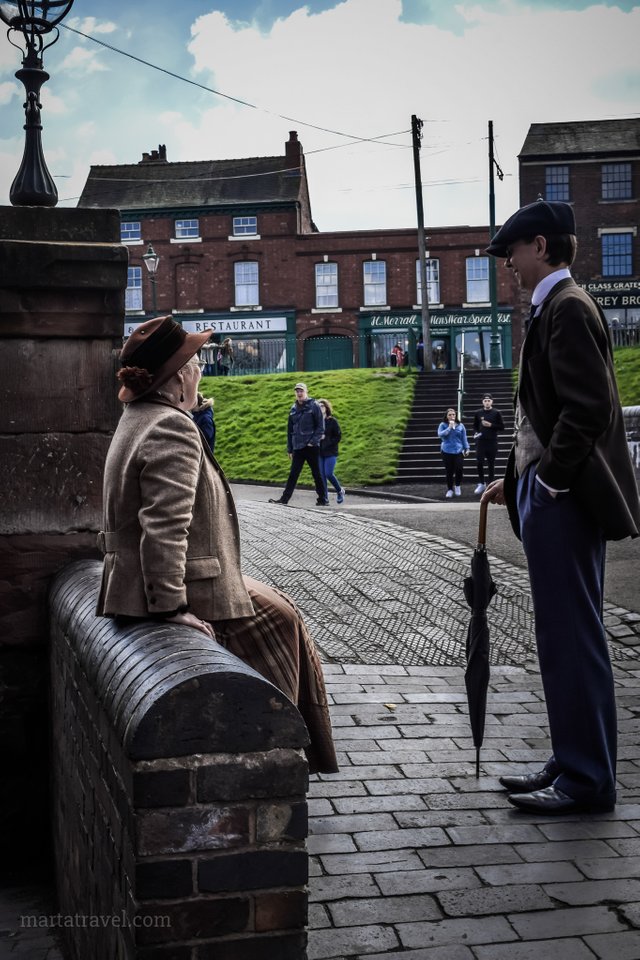
This museum allows one, to transform back into different decades and learn more about the Black Country. It’s a fully functional village, with actors- who are dressed in vintage outfits, strolling around the area and sparking a conversation with the passers- by. This place is essentially like a fun- interactive history lesson! Great place for any adult or child – I’d pick it over Disneyland any day!
I could honestly write a novel about the different shopping stores, houses and details of this place that I witnessed and how atmospheric it was- but instead I will allow my photographs to tell that story for the most part.

Every shop is filled with different historical items and the shop keepers are ready to spark an informative conversation with you, treating you like a ‘’potential customer’’. For example, in the clothing shop, my friend and I, were recommended some antique garments by the sales person, who’d lift up the dresses and point out all the intricate details. This only deepened my fascination with this place, as it really allows one to fully immerse oneself in the displayed eras, it’s not scripted which makes the conversations very exciting and natural.
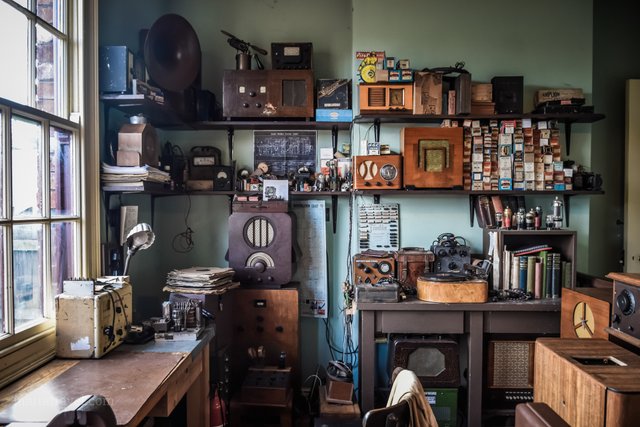
Similar went for the jewellery shop, hardware shop, grocery shop or the pharmacist who was showing kids who were innocently eating lollipops- varied vintage tools used for pulling out teeth. I must say myself and their parents found their mortified faces looking at their lollipops- very amusing.
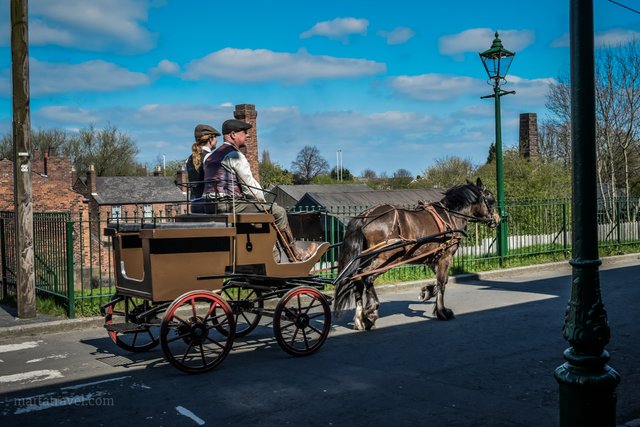
The fried fish shop in the village was one of the shops you could purchase from (along with the pub, bakery, sweet shop, café). I hurried over, to try this original 1930’s recipe made with the authentic 1930’s fryers. The long lines proved its popularity, but the wait was worth it, as soon as I took the first bite into the newspaper-wrapped delicious fish and chips. I sat on the grass and watched people in dresses, suits and top hats riding horse carriages or drive in vintage cars, it felt so surreal.
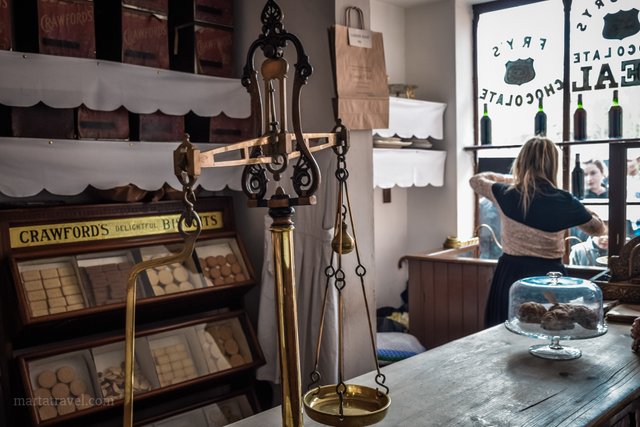
I then walked down to T’Cooks sweet shop for some dessert cravings. The shop was replicating the ways of making sweets from 1871-1901, using authentic vintage culinary tools. It was mesmerising to watch and learn more about the process- I was told that it’s important to stick to the original recipe and tools so that people could have a realistic taste of sweets back from those times. I then got a bag of rhubarb and custard sweets, tried one and saved the rest to enjoy later.
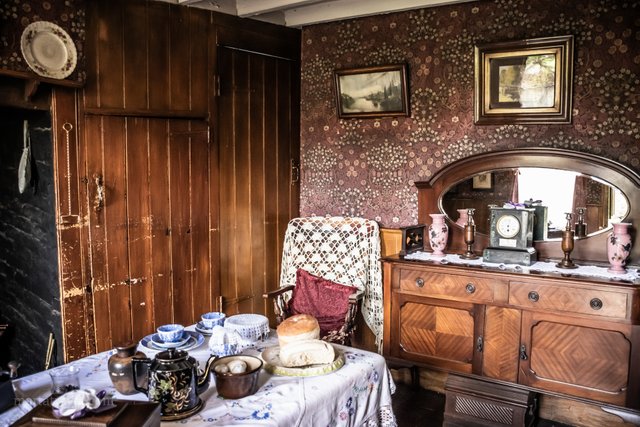
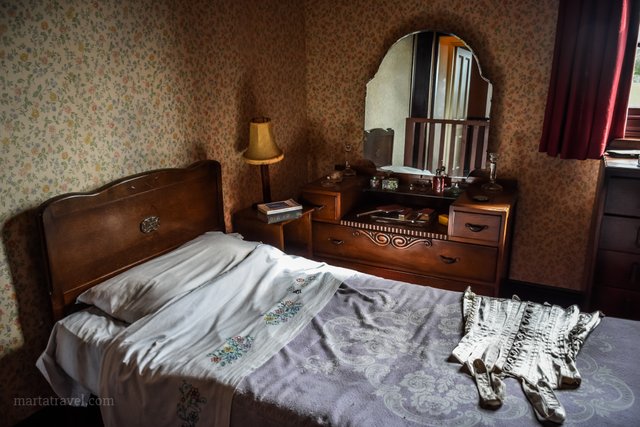
I explored some of the houses, where I was met once again by incredibly detailed portrayals of various decades, using the furniture, decorating and accessories that were placed around, just as if someone was using them a moment ago. Like a dress corset neatly laid on bed to be worn. A little washbowl on the vanity table with water inside, or the freshly baked bread and vegetables laying on the kitchen table. Some houses were empty and in some I was met by more actors who would share historical insight into the decades and what ‘’their life looks like’’ in those times.
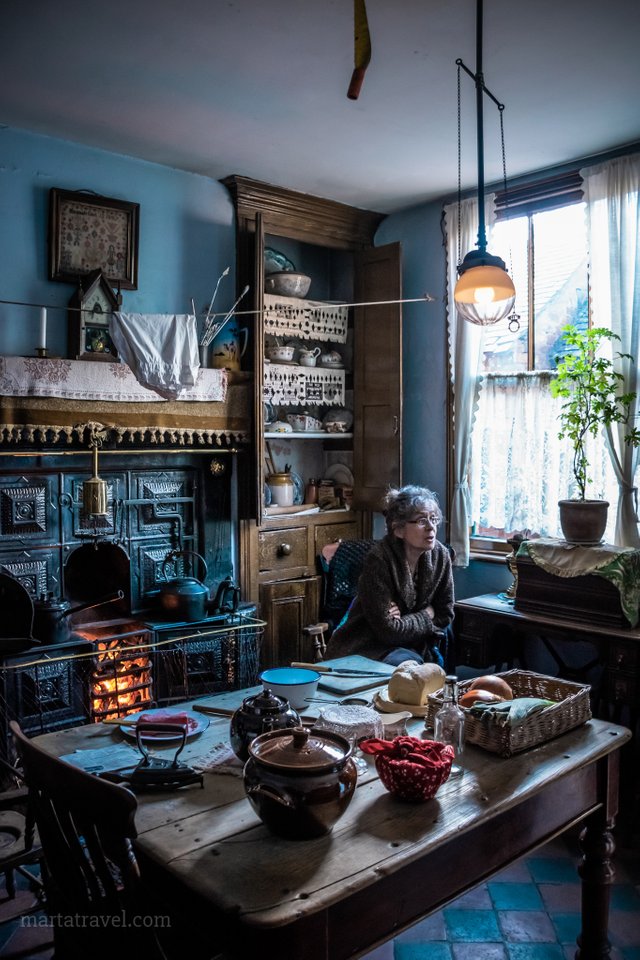
I could freely ask any questions and was met by genuine interest and answers. I could feel those people wanted to be there, just loving what they do. In one of the houses a woman was cooking soup on the old fireplace, to which she then explained the process of boiling hot water, cooking and even doing laundry. It was such simple things, made easy in this day and age that we take for granted today. Yet, I found myself drawn to the simplicity of this life and the self-sustainability.
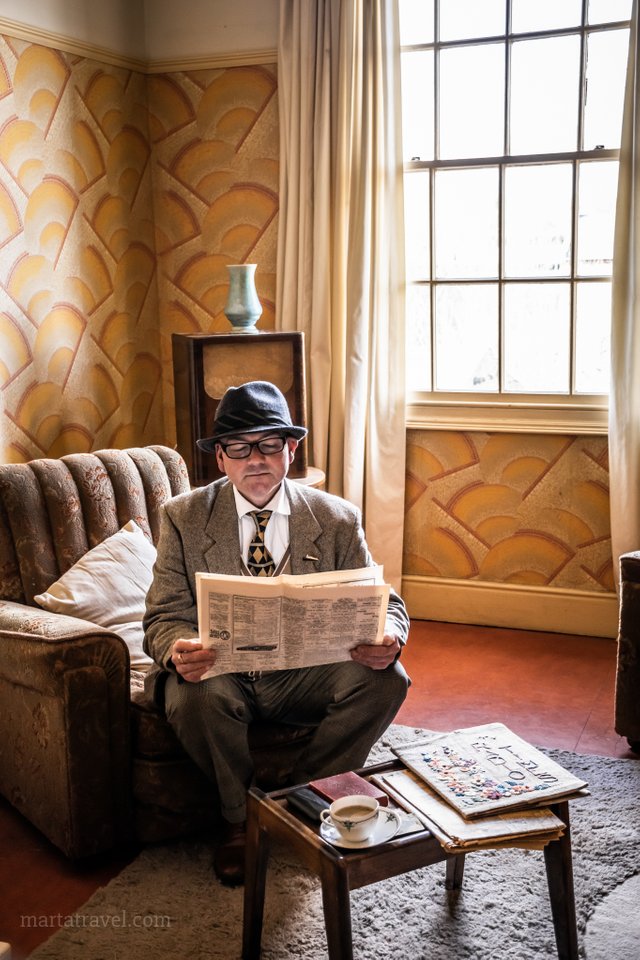
I love he layers of detail the museum incorporates into the narrative and volunteers, all those details adding a sense of realism and authenticity and the fact that those actors, fully immerse themselves in the roles. They just come to their designated homes and do things that people have done from decades ago. The more I explored this place, the bigger the urge I had to apply for a job there to spend my days talking to the passers-by while I work in the garden or cook soups for the day, embracing the past.
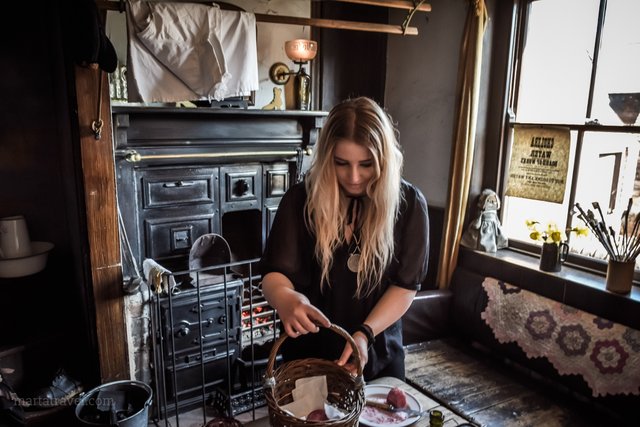
Me, trying to blend into the scenery ….
That in mind, this place doesn’t only offer conversations as historical insight. There’s a series of workshops you can attend to learn ways that things were done or made back in the day and sometimes have a go at it yourself. Like I did in one of the sheds, where a woman was working with hot furnaces in shaping hot steel and explaining the process, teaching me how to make a steel hoop chain!
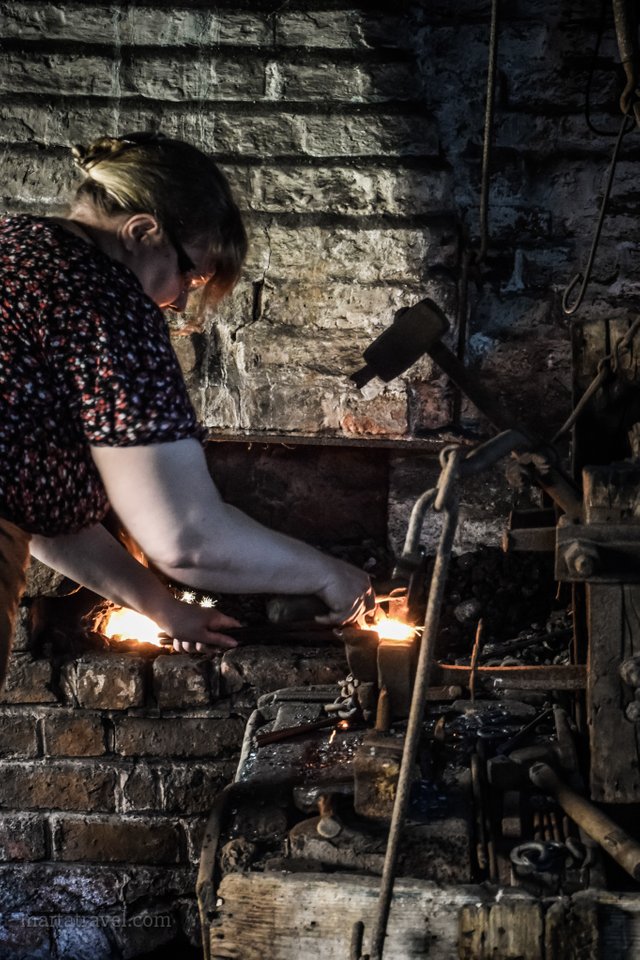
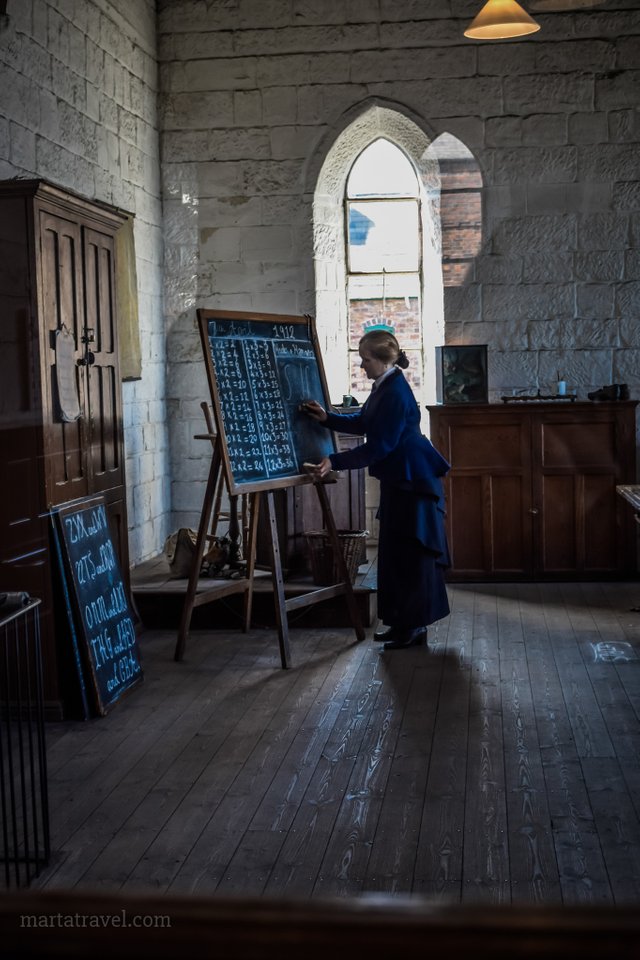
Speaking of learning opportunities, I then headed over to school! The St James school was built in 1842 and today we have an insight of what it would have been like in 1912. There’s a time each day when you can attend a lesson, and of course I had to join in on that experience. In the classroom the boys and girls sat on separate sides. The teacher was dressed in a beautiful 1912 attire, and she started the lesson by scolding people who wore nail polish! She said that any kids with dirty hands would be sent home! She then proceeded to teach us some basic knowledge; giving insight into what the school system was like, while picking on us fiercely! We all laughed but her strict tone and appearance made me hope she won’t ask me any questions as I would probably forget everything on the spot!
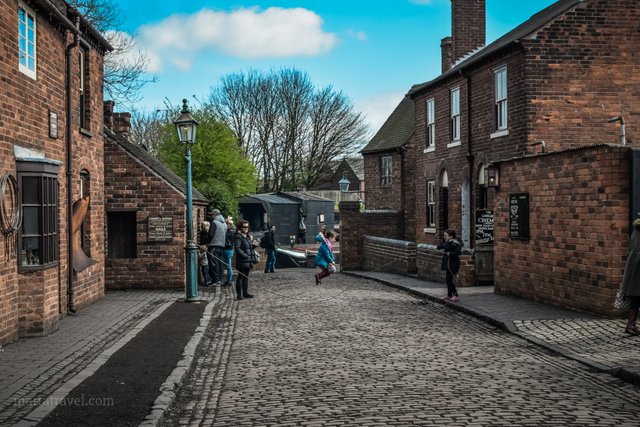
After the lesson I went out to the streets, finding some of the kids playing. I have to say I really enjoyed the interest and engagement of kids- that I witnessed throughout this museum experience. All of their faces glowing with fascination, asking actors questions and soaking up all the knowledge. I especially enjoyed seeing them play on the streets with antique toys such as ‘hoop and stick’ with actors showing them how. I shortly joined in to try ‘hoop and stick’ myself and can confirm that it’s harder than it looks!
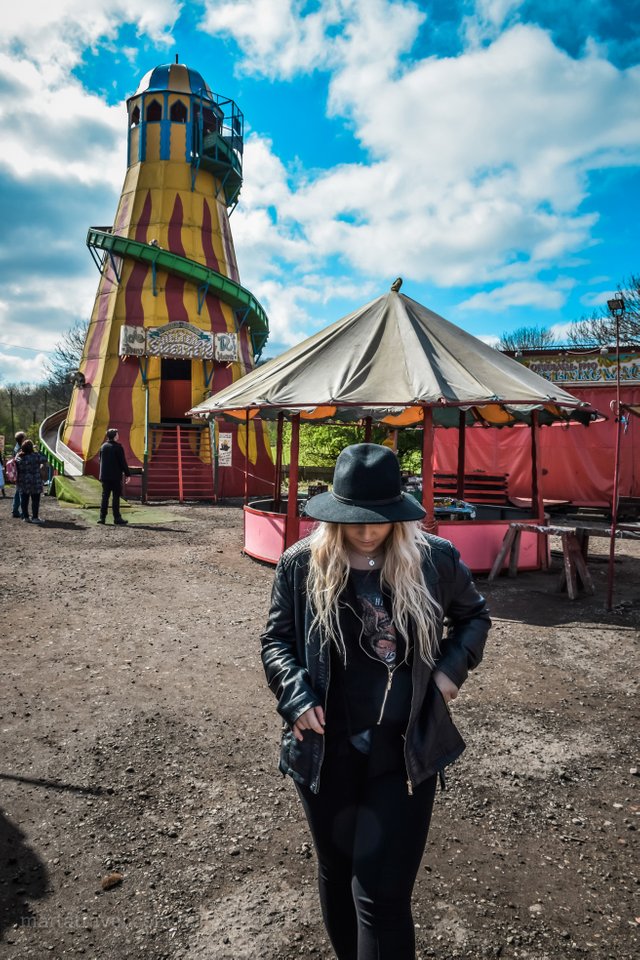

As if it couldn’t get any more fun…. I went to a nearby Fairground, where booths with candy, carousels, prizes to be won and other wonders from different decades throughout the 1900’s were found. I went to the tower slide, payed and climbed up to the top and was given an old sliding mat which was covered in wax to slide down easier….I appreciated the views of the museum from the top. Then I WENT SLIDING DOWN WITH THE SPEED OF LIGHT! That’s what it felt like anyway! There was a lot to admire at the Fairground, but at times it gave me some spooky vibes (which I thoroughly enjoyed) with the vintage games, toys and a specific sailor boy puppet in glass.
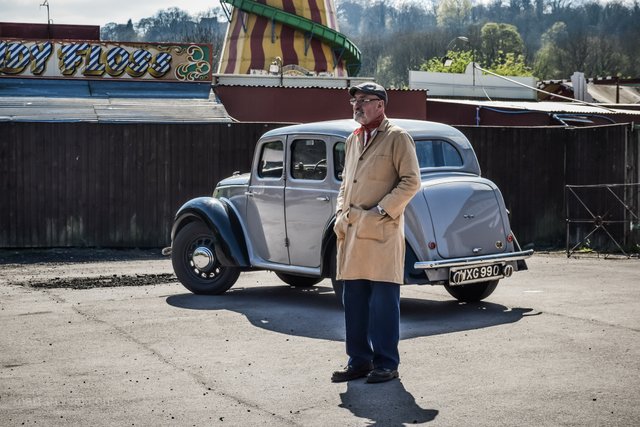
Some shots of the Conway garage next to the fair! One of the many ways of transport that can take you around the village!
Then it was time to head to the Dudley canal tunnel. West midlands are quite renowned for their canal system and one of the perks of the museum was a boat ride through them.
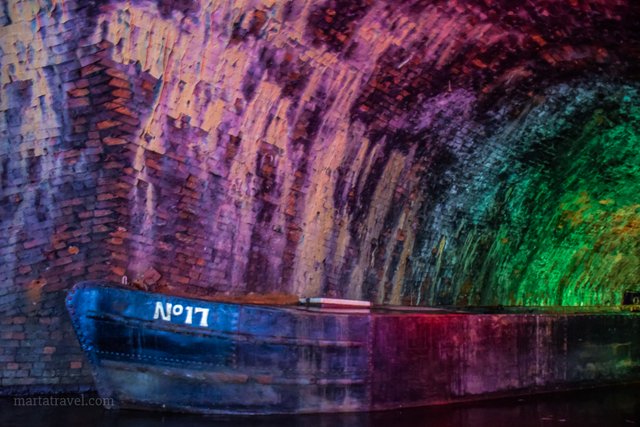
I enjoyed going through the mysterious, dark and gloomy canal tunnels with various hidden caves. One cave inside was like something out of a fairy tale, filled with fresh air, beautifully lit with magical LED lights and vibrant hues illuminating stone walls. I learned that the museum allows small concerts and weddings in this cave! What an amazing and unique location for a concert or a wedding! There we watched a documentary which was projected onto one of the cave walls! We learned how these canals came to life by the hard work of men and children. They had to use their legs on the tunnel walls to move the boats which carried the goods. I even was called out to try and do it myself with a fellow boat rider!
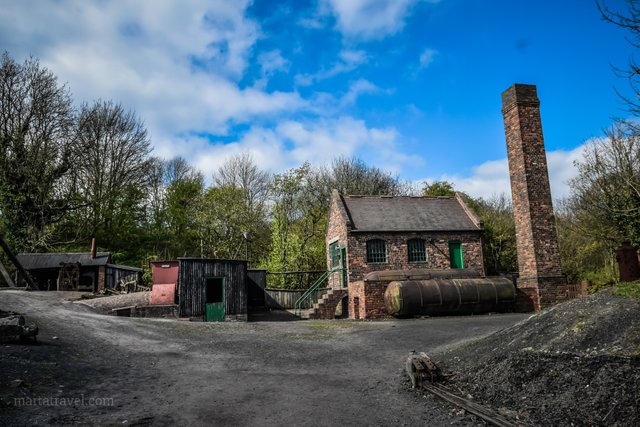
The last but not least -was a coal mine. I was taken back into 1850 with our safety helmets and torches to explore one of the coal mines and learn more about one of the staples of Black Country! I found myself fascinated and completely immersed in all the information a guide was sharing with us, while we followed a slightly claustrophobic, pitch black maze of various coal mine tunnels. Some were wide and some were narrow, there was some interactive aspects such as various mannequins to portray various mining scenes with audio recordings. The tour guide described how kids as little as 8 years old would come to work in the freezing mines all day and often losing their life due to its harsh conditions. The coal mine was fascinating, though understandably no photos were allowed. really appreciated the dark and claustrophobic atmosphere of this place as you could really imagine the harsh realities of this industrious area.
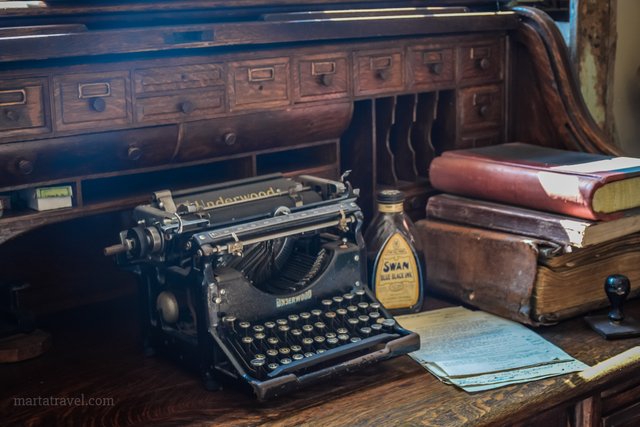
What I’ve described here, doesn’t even cover all this park has to offer! There is so much more! I therefore advise anyone who wants to visit to come early in the opening hours and make a note of all the showings, screenings and workshops that you don’t want to miss and plan your route around village according to that! And even then- prepare yourself as you’ll feel the need to come back. I firmly believe that one day is not enough to see and experience this place in its entirety!
Black Country Living Museum even does events to celebrate different decades, like 1930’s or 1950’s parties where attendees are asked to dress accordingly to the chosen era. There are also special events for Halloween (oh how I’d love to come back for that) or Christmas! There is so much thrill and adventure in this place! I had such an amazing time and am eagerly looking forward to return one day!
What a lovely post! I haven't been on Steemit since the last time I commented, so this is the first thing I'm seeing, and am really impressed at the detail and insight you've put into this.